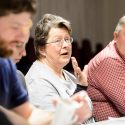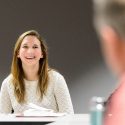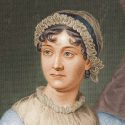High-school students find new meaning in 1962 science-literature classic at UW program
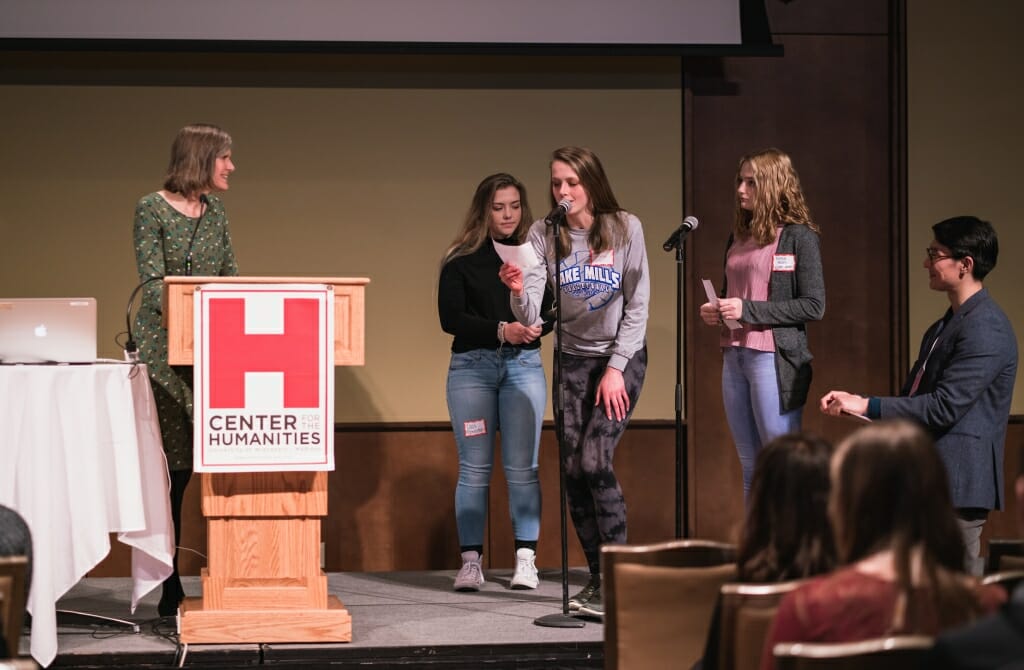
CAPTION Students question keynote speaker Sandra Steingraber, an author, biologist and environmentalist, after her talk at the Great World Texts conference in Union South on the UW–Madison campus April 9. Caitlin Barry, Smoketree Photography, used by permission
Nine hundred students from 26 high schools in Wisconsin gathered on the University of Wisconsin–Madison campus April 9 to complete an intensive study of Silent Spring, a 1962 classic of popular science literature that helped launch modern environmentalism later in the decade.
In Silent Spring, author and biologist Rachel Carson explored the health consequences of the exploding use of chemical insecticides, particularly DDT. Many credit the book for raising awareness of the impact of synthetic chemicals on the environment and human health, and setting the stage for major environmental laws such as the Clean Water Act, the Clean Air Act, and the Environmental Protection Agency, founded in 1970.
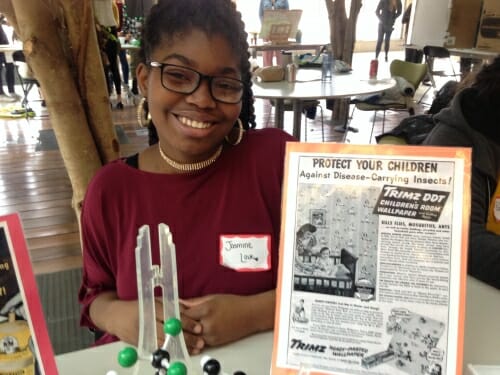
“Silent Spring absolutely” made readers care about the issue, said Jasmine Love, a sophomore at Golda Meir School in Milwaukee. “From the first few pages, Carson was speaking of DDT as a metaphor.” The book enabled her teacher to simultaneously teach environmental science and English, Love said. Her project reprinted a 1950s advertisement for DDT-laden wallpaper that was sold to “protect your children.” Carson correctly suggested that DDT disrupts reproduction by simulating sex hormones. “This was the reality, and we need to focus on reality,” Love said. David Tenenbaum
In 1968, evidence from the UW–Madison’s zoological museum showed that DDT was destroying bald eagle eggs. Wisconsin became the first state in the nation to ban DDT.
After a keynote speech by biologist-author Sandra Steingraber, almost two dozen students questioned Steingraber about her life and work. Izzy Vetterman, from the Kettle Moraine School for Arts & Performance, asked, “What would you recommend for students like us to do for the environment in our everyday lives?”
“It’s easy to see environment as a lifestyle issue,” Steingraber responded, “with a daily reminder to bike or take public transport. But we are at a point where these are not sufficient to bring about the change we need.” Rather than individual action, “what is needed is systemic change.”
In the afternoon, the students presented table-top displays with a scientific or artistic response to the environmental issues raised by Silent Spring.
The conference culminated the 14th Great World Texts program, organized by the UW–Madison Center for the Humanities. Participating students spend the school year studying a work of literature, using curriculum material provided by the program, and then they come together on campus in the spring to share their experience through projects they create and present.
“This is a program that has enriched classrooms, making possible the highest level of inquiry and engagement,” Sara Guyer, professor of English and director of the Center for the Humanities, told the students, “but one that also has inspired students and challenged them – by connecting them – you! – to worlds across time and space, across languages and cultures, ideologies and systems of belief.”
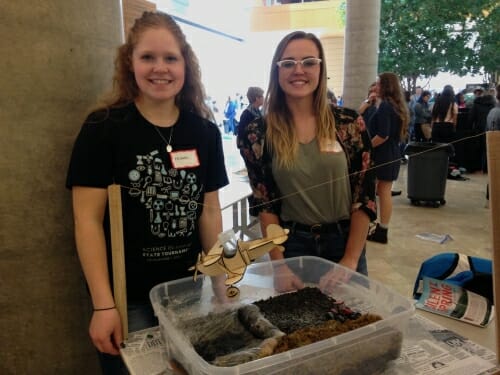
Michelle Dewitz, left, and Payton Bertrang, from Osseo Fairchild High School, with a display showing how a chemical like DDT spreads through the environment. “This was right up my alley,” said Bertrang. “I was excited to do an English project where our science knowledge came into play.” “Carson was ahead of her time,” said Dewitz, “and I enjoyed doing this for an English class.” David Tenenbaum
Great World Texts attracts repeat attendance by many teachers. “I’ve been part of this for 11 years,” said English teacher Alexander Branderhorst from the Milwaukee High School of the Arts. “From a professional standpoint, I like how it forces me to take on new texts. It makes me reinvent, challenge my teaching, so it does not get stodgy or repetitive.”
Silent Spring was one of the few non-fiction Great World Texts, but Branderhorst was pleasantly surprised by the student response. “It really resonated with them. It was one of the easiest books in the program.”
English teacher Dee Beasley brought 17 advanced placement English students from Osseo-Fairchild High School. “We are a very small, rural district, and this provides our students a platform, not to compete, but to see that their education is comparable to what students in larger schools receive, and it makes them feel part of a larger learning group,” she said.
Dealing with the science in Silent Spring “totally put me out of my comfort zone,” Beasley said, “but it did not matter. A piece of writing is a piece of writing, and there is learning that can come from it.”
Support for this year’s program comes from A.W. Mellon Foundation, the Evjue Foundation, UW–Madison Libraries, the Department of History, the Anonymous Fund of the College of Letters & Science, and the Wisconsin Department of Public Instruction.
Participating high schools were:
Tags: books, humanities, outreach

